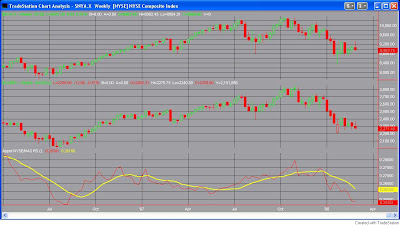Over the weekend I got an email from “Brian” – a regular reader. He wrote that he had read one time that when the S&P 500 closes down 1% or more on the last trading day of the month, the next day has had a strong positive bias. He went on to note that eight of the last ten times this has happened the month has started with an up day.
I’ve read other research in the past suggesting that the 1st day of the month had a strong seasonal bias and I decided this whole notion was worth exploring more.
Brian’s 8 for the last 10 result matched my data, and in fact the 1st day of the month has been positive 11 of the last 13 times going back to November of 1998. Looking back further, though, there was no apparent edge. Between 1960 and November of 1998 there was a 1%+ drop on the last day of the month 25 times. Thirteen times the market lost ground the next day and twelve times it gained.
If we eliminate the 1% requirement and look at instances when the last day of the month closed down at all I found the following:
Since 1960 there has been a 55% chance of the 1st day of the month then having an up-day. When you consider that the chance of ANY day over that period being an up day was about 53%, the edge doesn’t seem large.
I broke out the data looking at 1960-1995 and then 1996-present and found some interesting differences. From 1960-1995 the chance of a down last day being followed by an up first day was only 47%. Since the end of 1995, it has happened 74 times with 54, or 73% of them, showing a gain on the 1st day of the next month.
Looking at all 1st days of the month shows a similar picture. From 1960 through 1995 the 1st day of the month finished positive 53% of the time – perfectly in line with all days. Since 1996 the first day of the month has finished positive 66% of the time.
Studies of recent history would show an upside bias on the 1st day of the month. Long-term studies would not indicate a bias. I cannot explain what may have happened in the 90’s that would have caused this to occur. Therefore it is difficult for me to say whether the bias truly has changed or what might cause the bias to revert back to pre-’96 form. Traders that try and incorporate the so-called “1st day of month bias” into their trading should be aware that the bias did not always exist, and therefore at some point may cease to exist again.






